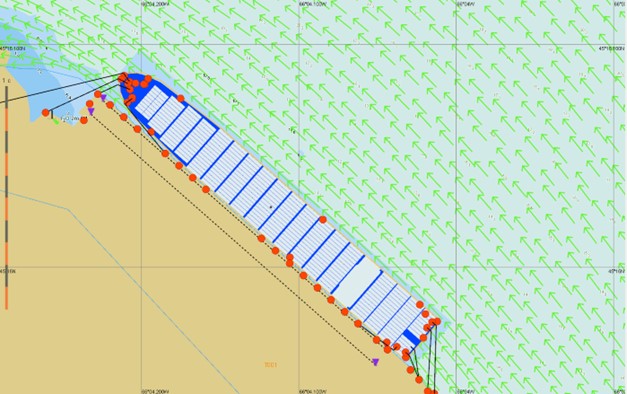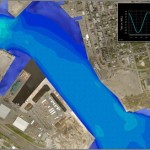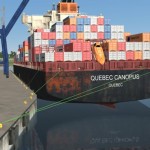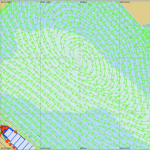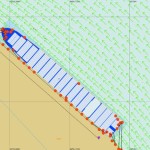Mooring Analysis for 335m containerships for the port of St. John, NB
2024
Client(s) : Saint John Port Authority, NB
This analysis was conducted at the request of the Port of Saint John (PSJ) to quantify the various factors that can contribute to elevated vessel mooring line loads/ tension, at the recently expanded Westside container terminal.
Mandate
The aim of the simulation outcomes is to identify factors that contribute to high line loads and to provide recommendations for preventative measures that could prevent/ reduce the likelihood of large container vessels breaking their mooring lines while at the terminal either because of strong winds or other conditions.
Tidal Stream and River Outflow Current
Given the large tidal range and significant variation in fresh water inflow from the Saint John River, the currents in the harbour are very complex and highly dynamic. As such, a good understanding of currents in the harbour is critical to the assessment of navigation issues for any vessel movements, and particularly for large vessels given the tight spatial constraints.
From a FVCOM three-dimensional hydrodynamic (3D HD) model, Baird developed a refined model grid using various sources of bathymetric data to provide higher resolution, particularly in the vicinity of the proposed project. The model domain and grid includes 9,636 nodes, 18,150 elements and ten vertical layers.
Colombo Class ship model
Tests were conducted specifically with the new design size vessel a “Colombo Class” with dimensions of 335 metres by 43 metres loaded to a maximum draught of 14 metres.


